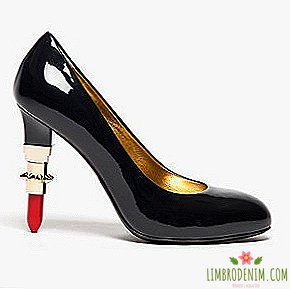How legendary fashion houses of the second half of the 20th century are reviving
closed on different For some reason, legendary brands still hold enormous potential, thanks to which new investors are attracted. Thus, the fashion house of the legendary Paul Poiret, closed in 1930, was recently put up for sale by French businessman Arnaud de Lummen at an online auction, which runs until November 28. We have already written about how the legendary fashion houses of the beginning of the 20th century are being revived. Now we are telling five more stories of resuscitation of houses created in the second half of the last century, the restart of which became long-awaited or, on the contrary, unexpected.
Delpozo

Spanish designer Jesús Del Poco founded his brand of men's clothing in 1974, opening a small atelier in the center of Madrid, and six years later he launched the women's line. Del Poco worked, rather, for the soul, rather than for the sake of money and fame, drawing on the traditions of the Spanish predecessors, fashion designers of the early XX century: Mariano Fortuny-Madrazo and Cristobal Balenciaga. They were revolutionaries: Balenciaga invented a dress-bag, styled geometry and worked with a sculptural cut, and Fortune patented the pleating technique in 1909 and created the famous dress "delphos". Del Pozo borrowed and developed some of their ideas. So, significant things for his brand became volumetric things, made with architectural precision. The designer did not strive for international recognition and expansion of the brand, he was more willing to spend his time creating costumes for theatrical productions and films, for example for Pedro Almodovar’s films.

Like many forward-thinking designers, Del Pozo supported the brand's profitability through the production of perfumery, which he engaged in the 90s. Among other things, in 2003, Del Pozo founded an organization to support young Spanish designers, which helped about sixty students to start a career in the fashion industry. During his lifetime, he noticed the current creative director of the brand, a Spaniard and an education architect, Josep Font, who headed the house after Del Pozo's death.
Font had the experience of successfully managing his own brand behind his back, and he took a thorough look at Delpozo. With his arrival, the company is reoriented to the global market, for which it radically changes its creative and marketing policy. Font brought the brand to a new level; The combination of complex architectural design, expensive fabrics and romantic silhouettes quickly attracted attention to the updated brand. His popularity and prestige are growing at a rapid pace, but the creative team of Delpozo is not going to stop there.
Carven

Until recently, the Carven fashion house was better known as a manufacturer of perfumes and watches than clothing. It is not surprising: the first perfume Madame Carmen de Tommaso Ma Griffe, created by her in 1946 and reprinted in 2013 under the new art director, in the postwar period enjoyed incredible popularity and flew hundreds of flacons around Paris. The French were amazed by the aroma that combined notes of bergamot, jasmine, sandalwood, vetiver and musk. Originally, Madame Carmen de Tommaso’s atelier specialized not only in perfumes, but also in women's haute couture clothing.

Founded in 1945 by Carmen de Tommaso, the brand protested against the formalism and maturity of the Dior collections. Madame Carmen noted that there was a free niche on the market - clothes for young girls. Taking up this idea, Madame acquired actress Leslie Caron and the princess of Egypt as clients. Embroidery and decoration of things became a distinctive sign of the house, but in the middle of the 20th century, the idea of creating sports items was not alien to him. For example, Madame created couture things for skiing and tennis. In addition, in the list of her orders was the form for the flight attendants Air France, she created a collection based on the paintings of Diego Velázquez and produced alcohol under her own brand. Carmen de Tommaso worked on her brand until she retired at the age of 84.
In 2008, the brand was purchased by the French company SCM, but the real revival of the brand was marked by the appointment of creative director Guillaume Henri, who had previously worked at Givenchy and Paule Ka. Rejecting the haute couture collections, the brand began producing affordable, but no less quality, prêt-à-porter clothing, which Henri describes in no other way as "bourgeois, but with a bold character." Many ideas Madame Carmen brand new art director was able to save. The brand also creates clothes for young girls, which allowed Henri to achieve unprecedented growth in sales and launch of new stores around the world. Nevertheless, according to confirmed information, Guillaume Henri will leave Carven at the end of November, and according to unconfirmed information, she will then take the place of creative director at Nina Ricci. Carven has already started searching for a replacement, because the company has ambitious plans and really great potential.
Christian lacroix

In 1987, Christian Lacroix leaves the Jean Patou fashion house with the CFDA Award in his hands, in collaboration with LVMH and Bernard Arnaud, to establish his own couture fashion house and stand on a par with Christian Dior and Yves Saint Laurent houses. Lacroix House is really compared to Dior: despite the context of the 80s, the designer takes the Dior retro new bow as a basis for his debut collection, and he is immediately praised for his knowledge of fashion history and theatricality. He creates outfits for the ballet "Gaîté Parisienne", opens branded boutiques in different cities of the world, creates uniforms for Air France and generally comes on all fronts: launches a line of accessories, children's clothing, underwear, jeans and perfumery. In addition, from 2002 to 2005, the fashion house made collections for Emilio Pucci, but it was not Lacroix himself who was engaged in them, but his future successor Sasha Walkkoff.

By the beginning of the 2000s, Lacroix's position is in order: his dresses are chosen by celebrities for carpets, and Anna Wintour - for filming and Vogue covers. However, in 2005, in the conditions of a worsening economic situation, LVMH had to sell the Christian Lacroix brand to the American group Falic, but this does not save the situation. By 2009, due to the growing crisis, falling sales and millions in losses, Lacroix declares the company bankrupt. A year later, the leadership of the house made an attempt to revive the brand, and Sasha Walkoff was appointed to take the place of the creative director. He has worked with Lacroix since 1992 and knows his style like no other. Sasha is taken primarily for restarting the male line, the things from which Lady Gaga wears to everyone’s surprise, home textiles, office supplies and other little things like scented candles.
The position of the house remains precarious to this day, but successful collections of accessories that are in great demand in the USA, South America and China, as well as a successful men's line, allow the company to gradually strengthen its position in the market. Lady Gaga still plays a role in this: the white dress of Christian Lacroix effectively appears in the final of her clip "Judas". In 2013, the company launches its own line of points and is currently preparing the women's prêt-à-porter collection for release, although the brand’s top plans would do well to include the restart of the site. As for Christian Lacroix himself, he continues to work, but already with other brands, such as Desigual, Pucci and Schiaparelli, as well as decorating interiors, including hotels.
Paco rabanne

A spaniard and an imaginative architect “Paco” Rabaneda y Cuervo in the 60s felt in time a spirit of change and a general fascination with futurism and industrial design. He showed his first collection with the categorical title “The Twelve Dresses of Modern Materials, Unsuitable for Wear” in 1966, really using metal, plastic, fiberglass, vinyl and wire in it. Behind Paco Raban was an experience as a jewelery designer, so he was easily able to work with materials such as plastic-rhodoid, and the assembly of designs.
One of his dresses almost from the catwalk was taken by Audrey Hepburn, appearing in it in the movie “Two on the Way.” In addition, his metal dresses can be seen in William Klein's cult film "Qui êtes-vous, Polly Maggoo?". Paco was enterprising and launched his own perfume in time in 1969, sales of which allowed him to develop the house. Having become known to the general public, Raban continues to experiment and surprise: he creates feather cloaks and woven chain mail, costumes for the theater and cinema, as well as stage outfits for Mylene Farmer. But in 1999, at the age of 65, Raban decided to retire.

The following year, the brand was acquired by Puig, however, the unstable economic situation did not allow it to be engaged in its development, and it was only taken in 2011 to revive the brand. The creative director’s chair is occupied by Hindu Manish Arora, whose own fantasy collections today look advantageous against the background of most shows in Paris. However, less than a year later, the designer leaves the company, and Patrick Robinson comes to replace him in 2005: alas, he creates extremely weak collections and lasts until 2012.
This is followed by another unsuccessful appointment. In 2012, Maneesha is replaced by 29-year-old Lydia Maurer, an adherent of a laconic style brought up by Ricardo Tisci. Obviously, the brand’s management is trying to find its niche in the market and at the same time preserve the brand’s DNA, so Lidia awkwardly recalls the archives at home. In 2013, the company relies on young designer Julien Dossen, who makes his debut in the spring-summer 2014 season. And now everything seems to fall into place. Dossen had previously trained with Nicolas Hesquiera in Balenciaga and treated the Paco Rabanne archives with respect, combining them with minimalism and sports.
Valentino

Designer Valentino Garavani and entrepreneur Giancarlo Giametti founded the Valentino fashion house in 1959, and debuted in 1962. Garavani’s design talent and Gemetti’s business acumen allowed them to create a brand known all over the world - without elegant and feminine Valentino dresses, it’s hard to imagine any prestigious event, be it the Oscar ceremony or the Met Gala charity ball. Jacqueline Kennedy and Elizabeth Taylor were married in brand dresses, but bright red evening dresses will always be Valentino's trademark. So much so that in 2000, in honor of the 40th anniversary of the fashion house, Valentino gave a show in Rome of 40 exclusively red dresses.

In 1998, the partners sold their business to the Italian conglomerate HDP Group for $ 300 million, and four years later, it was a third cheaper to buy Marzotto Apparel. At the same time, Valentino himself is engaged in the creative side of affairs in the company until retirement in 2008. The year before, the brand was once again resold - now London investment company Permira becomes its owner, having spent $ 3.5 billion on the deal. But that was not the end of it - after five years the brand passed into the hands of the Qatar Qatar corporation Mayhoola. Valentino's current well-being is largely due to Matteo Marzotto, who saved the brand from collapse and more than once demonstrated a business acumen. He not only resurrected the brand after the economic recession in the early 2000s, but also brought back its greatness by applying a fundamentally new approach and “making friends” with the classic tricks of the house with the latest fashion trends. Putting Valentino on his feet, Marzotto set about a new project - reanimation of the undeservedly forgotten Vionnet.
A new wave of Valentino success at home is associated with the names of the duet of designers Maria Grazia Curie and Pierre-Paolo Piccioli. Their tandem successfully copes with the design of accessories, as well as with lines of ready-made clothing and couture. Significant sales growth speaks for itself. They remain true to the founder's style, using scarlet color, lace and embroidery, but at the same time, Currie and Piccioli simplified the cut and minimized the amount of detail. Loyalty to the tradition, along with the individual handwriting of the designers, earned the approval of Valentino himself.




